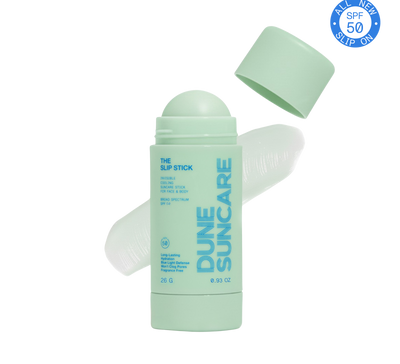Our Derms
About Dr. Bobby Buka:
Dr. Bobby Buka, MD, JD, is a board-certified dermatologist, member of the American Academy of Dermatology and Founder and CEO of The Dermatology Specialists —the largest dermatology practice in New York. He has authored two books on skin health (Buka’s Emergencies in Dermatology and Top 50 Dermatology Case Studies for Primary Care).
Dr. Buka is a clinical instructor at Mount Sinai Hospital and the Founder and former Chief Science Officer of First Aid Beauty. He is regarded as an expert in his field on cosmetic and medical dermatological treatments and was a finalist for the prestigious Ernst & Young Entrepreneur Of The Year Awards.
His interest in the symbiotic potential between medicine and holistic living inspired him to build Prana Farms. Each week, Prana Farms produce is stocked in TDS sites across NY for patients and providers to enjoy at no charge.
Social handle: @thedermspecs
Website: https://www.thedermspecs.com
Dr. Buka FAQS
Ultraviolet rays are non-visible rays of light emitted by the sun. They come in three flavors: A, B, and C. UVC gets absorbed by our atmosphere, leaving UVA and UVB to contend with. Broadly speaking, UVB is the frequency of light associated with sun burns or “acute solar toxicity”. UVA is associated with longer-term DNA/Chromosomal damage and is more definitively linked with skin cancer.
I would say that it is more about which ingredients you do not want in a sunscreen. Both chemical and physical sunscreens can block harmful rays, but avoiding potential irritants (i.e. cinnamates) as well as ingredients that harm the environment (i.e. oxybenzone, octinoxate) is paramount.
Classic teaching is 2oz (shot glass) per extremity and 4oz for the trunk (back and chest), but no need to get obsessive about it - a thin coat is plenty. We see more issues with areas of the body being missed altogether than too little applied. Frequency is once a day with the asterisk that if you’re extra sweaty or doing high contact water sports (i.e. surfing), a second application is probably a good idea, even with water-resistant/proof sunscreens.
With a friend. :-) Covering all sun-exposed areas may seem straight-forward, but certain areas like middle/upper back may need help from a buddy.
Mineral or “physical” sunscreens contain zinc or titanium that serve as tiny mirrors on the skin’s surface that reflect back UV rays. Chemical sunscreens contain a molecule that absorbs ultraviolet A and B light. The absorption of these rays convert the structure of the molecule, but in so doing, prevent ultraviolet light from reaching the dermis.
Think of your skin as SPF 1. So SPF 2 would be twice your skin’s own protection against ultraviolet light. SPF 10, ten times. The American Academy of Dermatology recommends SPF 30 as sufficient protection, mostly because above that number, the incremental benefit is minimal.
Oooh, good question. As with any topical, active ingredient goes FIRST, then moisturizer/make-up after.
That would be super vigilant. I ask my male (and female) patients with significant hair loss to apply to naked scalp, but a full head of hair should provide sufficient coverage. Similarly, men with beards can probably skip that area of the face.
Yes, this is a super careful formulation. Neem and knotweed are powerful antioxidants with low allergenicity (allergic potential). Botanic antioxidants like these serve as charged particles that sop up and inactivate free radicals. If not neutralized, these free radicals will cause DNA damage to skin cells (keratinocytes). Roselle and ginger are powerful anti-inflammatories. So it’s like having 3 lines of defense - Line 1 block harmful rays, Line 2 scavenge any free radicals that are created from any radiation that sneaks through, and Line 3 quell any inflammation that results from solar exposure. I think they should rename DUNE to Triple Solar Defense, but it’s not nearly as sexy.
I have been recommending sunscreen for over 20 years. How many patients listen to me, I’ll never know. What I have learned over my career is that it is increasingly important to consider “the feel” of a formula. We used to have thick, chalky sunscreen dispensers in front of every one of our offices. They did a great job at blocking UV light, but no one used them…ever! One of the reasons the Dermatology Specialists partnered with DUNE is that we finally found a product that patients don’t mind applying. It actually feels smooth, non-sticky, and cooling going on. It is no longer a “fight” to apply to loved ones, and that better adoption means increased compliance, means safer skin.
I choose patient preference here. I do see more coverage “misses” with spray vs gel, where the aerosolized particles don't quite land in an even distribution across applied body surface area, but I get the spray fans - especially our sporty patients - who want to spritz and go.
(i.e. dry, acne-prone skin, oily, sensitive, combination skin, mature skin, everyday use, etc.)
Dry/Sensitive: Cream > Gel > Spray which has the lowest emollient effect.
Acne/Oily/Mature: All acceptable - patient preference.
No oils please. These are not as common as other SPF vehicles but do still exist. Oil-based SPF products can clog pores and allow bacteria to proliferate within hair follicles.
I love the DUNE line for kids, my own two young boys included. And I do not miss the “Aw Daaaad,” that used to come with sticky, chalky brands that got full of sand and made us all bright white and miserable.
It is a common misconception that skin of color is not susceptible to photodamage and skin cancer. Probably the most infamous case of skin cancer in black skin is Bob Marley who developed and died from melanoma that began on his toe. Solar protection in every skin tone is an important cornerstone of skin health and DUNE does a terrific job in delivering easy-to-use, effective, environmentally-friendly sunscreen.



